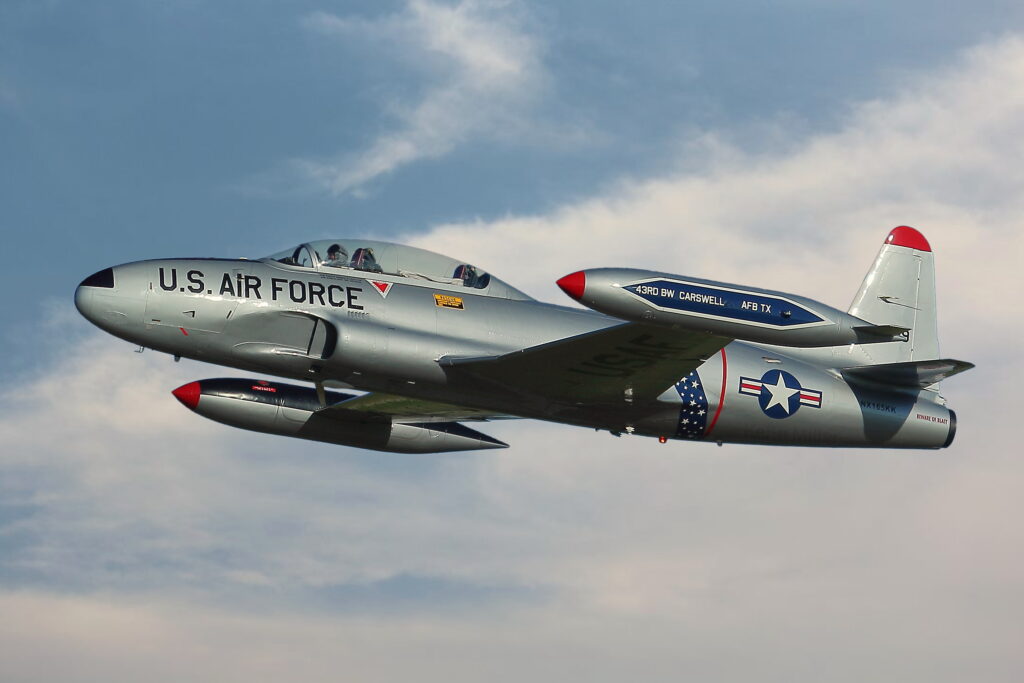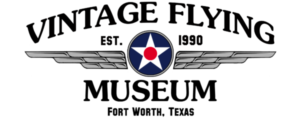
T-33 Shooting Star
Designed by the legendary Lockheed Skunk Works Chief, Clarence “Kelly” Johnson, the two-place T-33 jet was designed for training pilots already qualified to fly propeller-driven aircraft. It was developed from the single-seat F-80 fighter by lengthening the fuselage about three feet to accommodate a second cockpit.
Originally designated the TF-8C, the T-33 made its first flight in 1948. The aircraft’s designation was officially changed to the T-33 in May 1943. Production continued until 1959 with 5,691 T-33s built. In addition to its use as a trainer, the T-33 has been used for such tasks as drone director, target towing, and in some countries even as a combat aircraft. The RT-33A, a reconnaissance version made primarily for use by foreign countries, had a camera installed in the nose and additional equipment in the rear cockpit.
Canadair CT-133 MK. 3 Silver Star
The first of the twenty Lockheed built T-33a (the Silver Star Mark 1), we delivered on loan to the RCAF two years later, followed by ten more aircraft. On 13 September 1951, Canadair signed a license agreement with Lockheed to build T-33 aircraft for the RCAF. This version, the CL-30, (or the T-33ANX by Lockheed and the USAF), was to be powered by an uprated 5,100 lbs. thrust Nene 10 engine licensed by Rolls Royce, supplied by Orenda Ltd. The USAF T-33s were powered by Allison J-33 turbojets with 4,600 lbs thrust. The RCAF designated the aircraft as the CT-133 Silver Star Mk. 3. Several versions were produced for functions such as pilots training, armament training, photo-recon, electronic warfare, and ejection seat training.
Livery
Our T-33 is painted in the markings of the Strategic Air Command (SAC) 43rd Bomb Wing T-33 aircraft. The 43rd BW flew B-58 Hustlers while stationed at Carswell AFB in Fort Worth, TX and set many world speed records during that time. The original civilian owner, Dennie Darnell was USAF Veteran who was stationed as Carswell and worked on B-58 life support equipment. He also served two tours in Vietnam as a Pararescue Jumper (PJ) rescuing downed pilots.
